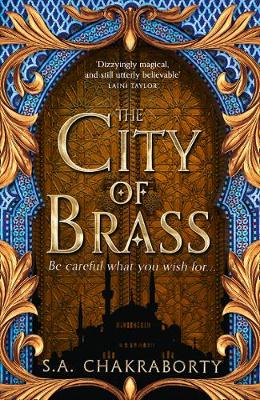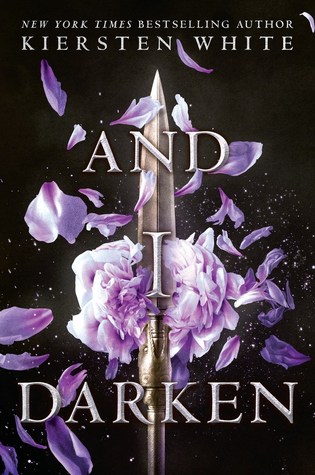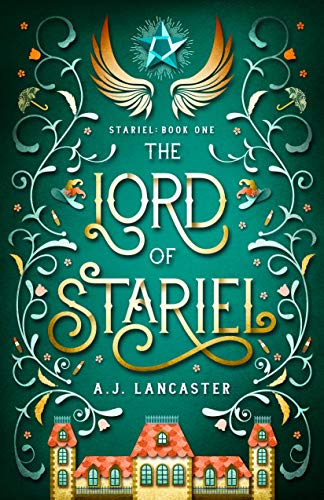Tough Travelling: Fantasy Landscapes
 Welcome intrepid adventurers to Tough Travelling with the Tough Guide to Fantasyland!
Welcome intrepid adventurers to Tough Travelling with the Tough Guide to Fantasyland!
That’s right, we’ve dusted it down and brought back this feature (created by Nathan of Fantasy Review Barn, revived by our friends over on Fantasy Faction, then dragged kicking and screaming to the Hive).
It is a monthly feature in which we rack our brains for popular (and not so popular) examples of fantasy tropes.
Tough Travelling is inspired by the informative and hilarious Tough Guide to Fantasyland by Diana Wynne Jones. Fellow bloggers are absolutely welcome to join in – just make your own list, publish it on your site, and then comment with the link on this article!
This month, we’re straying from DWJ’s path to enter the Wyrd and Wonder glade, where for today’s prompt they’re looking at Fantasy Landscapes. So we’ve decided to use that as this month’s Tough Travelling focus.
A big thank you to Beth, Nils, Theo, Scarlett, and Asha for their recommendations…
Beth:
My choice for today’s photo prompt is G D Penman’s Witch of Empire series. They’ve taken what would be familiar landscapes, and turned them into fantasy landscapes; from a Manhattan built by demons, a London cursed into over-expansion until it’s dribbling over the white cliffs of Dover, a hag-haunted Irish marsh, the darkness of a Hong Kong run by vampires… what I love best about all these landscapes was how vivid and easily imagined they were.
Another landscape that always comes to mind when I think of a fantastical fantasy landscape is that of the shard plains from Brandon Sanderson’s The Stormlight Archive. It’s been a looong time since I’ve read The Way of Kings, but I can still picture those giant shards of land with the canyons in between, filled with fallen soldiers and dangers a plenty. The battles with bridgerunners scurrying to put the bridges in place from shard to shard for the army to cross. It’s really stuck in my mind.
I’d like to finish in a forest, as per the theme of this year’s Wyrd and Wonder, so I’ll venture into the Wilds of Jen William’s Sarn. Some kind of poison affects the forests of the world in Williams’ The Winnowing Flame series, so that everything is grown huge. They’re haunted by terrifying spirit-like creatures which will follow you and flay you alive… Definitely not the kind of forest to go exploring for alien shipwrecks and treasure #JustSaying
Nils:
Ok for this one, I’m not choosing Lord of the Rings!! Although shout-out to Lothlorien and Fangorn for being the best forests ever!! Fight me!
This time though I’m choosing the desert landscape as beautifully portrayed in three of my favourite reads: Dune by Frank Herbert, The Daevabad trilogy by S.A. Chakraborty and The Stardust Thief by Chelsea Abdulla.
Dune is set on the planet of Arrakis, an unforgiving desert landscape with a sparse population. When Paul Atreides’s father is called to Arrakis to act as a steward we learn why so many are desperate to control it – Spice. This is a drug-like substance which can only be mined in the Arrakis desert, and with its abilities to give longer-life, foresight, mental abilities, and essential for space navigation you can see why it is used as a commodity. Yet that’s not my favourite aspect of the world, this lies within the deadly creatures which dwell within the sand, the worms. Dune is certainly a complex novel, but one I thoroughly enjoyed.
Both The Daevabad trilogy and The Stardust Thief are Middle-Eastern/Arabic inspired fantasies, and reflect much of the desert’s beauty as well as the relentless hardship travelling across its terrain. The first book in Chakraborty’s trilogy, The City of Brass is set in both Cairo and the fabled city of Daevabad, and shows us a lot of the landscape as Nahri and Dara go in search of the city. I loved how both characters use a flying carpet as their means of travel!
Travelling through the sand also occurs in The Stardust Thief, as Loulie, Qadir and the others are on a quest for a magical lamp! I love how Abdullah has our characters see mirages, be pursued by ghouls and fall beneath the sand into ancient ruins. It’s just a really fun, chaotic adventure.
Theo:
Peter Newman’s trilogy beginning with The Deathless has a fantastic forested landscape of “The Wild” full of demonic monstrosities that curse or bind humans to them. The Wild is crisscrossed by crystal highways which the monsters cannot touch so humanity ekes out an existence in settlements huddled alongside these roadways, relying on their feudal overlords for protection. Those overlords, grouped in great houses and living in great floating crystal castles don crystal suits that enable them to soar and swoop and fight back the demonic invaders, But overlords have a dark secret, an immortality of the favoured few which involves appropriating the carefully cultured bodies of a blood relative to live out a whole new lifespan while the body’s original soul is crushed out of existence. Conspiracies abound within and beyond the crystal castles that constantly blur the lines between demon and human.
Micah Yongo’s Lost Gods has the trained assassins of the Shedaim, caught up in betrayal and intrigue, but they come back often to the Forest of Silences behind their training home. There the blood trees that they planted as children will track their lives and their successes, and – unless they are of a great and enduring power – whither into dry dust on their deaths. At the centre of the forest sits the great Willow planted by the order’s founder Qoh’leth flourishing still.
And then, because I couldn’t pass by without mentioning the greatest forest in Middle Earth (eh Nils!) I refer of course to Doriath in Beleriand, where Thingol the Grey first wooed Melian the Maia, where she cast the spell of the girdle of Melian to keep the Sindar safe from the ravages of Morogoth. Beren stumbled into the forest to begin his fateful courtship of Luthien Tinuviel, but the forest endured until Thingol himself was undone by his own pride and the greed of the dwarven smiths he worked with. (For more details – read the Silmarillion!)
Scarlett:
I enjoyed the settings in The City of Brass and The Stardust Thief Nils mentioned as well. I am a sucker for immersive settings and the Middle-Eastern/Arabic is such an enchanting one to me. So different from my own world and I love reading glimpses of other cultures or wholly comprehensively imagined worlds. Another one that was similar to those that was just fantastic, was Kiersten White’s The Conqueror’s Saga. Holy Moly did I fall for the gardens in the Wallachian world and Ottoman Empire. Filled with colorful bazaars, harams and hamman baths, ironworks on the buildings and the wonderful forests in the surrounding areas.
One that intrigued me was the shifting landscapes in The Iron Crown by L.L. MacRae. This concept was new to me when I read the novel and about the forest scapes could shift and move to new landscapes. It let my imagination go everywhere with it and just felt refreshing overall. It wants you to keep turning those pages, as you never know what will be around the corner next.
The Ancestor by Daniele Trussoni takes place in the Italian Alps and is filled with magical realism. As the main character travels in search of her family, she emerges into an alternate part of the forest and landscape that is quaint and bizarre. Not only are the humans that live there different, but the forest has magical elements and feels overwhelmingly important as in old fairytales. A connection to it’s inhabitants make it really special and a bit scary too.
Asha:
The first book that sprang to mind for me is a bit of a blast from the past: Goab, the Desert of Colours in The Neverending Story. I remember being captivated by the idea of every sand dune being a different colour as a child, and I definitely tried to draw it once or twice! Gold and silver streams of sand flowed between each dune, separating the colours, which sounded like something from an expensive paintbox – cobalt, saffron, vermilion, lapis lazuli… The description is so rich, you can’t help but imagine it.
One of the most inventive fantasy landscapes I’ve read about recently is in Joshua Phillip Johnson’s The Forever Sea, which takes place mostly on an enormous sea – made of grass. All the islands described were so unique, but the idea of a miles-deep sea of grasses and plants is just so clever and enthralling.
I also want to shout out AJ Lancaster’s Stariel books, where the sentient estate of Stariel is almost a character in its own right – a quiet and proper piece of English countryside with a magical twist. I love how the characters’ connection to the land is such an important part of the story.
And of course, if we’re talking fantasy forests, then they don’t come much better than in Silver in the Wood by Emily Tesh, which perfectly encapsulates the feeling of walking in ancient British woodland (and that animal fear of all the magic that lurks there). It’s another book where the landscape itself is almost a character, and one that will make you think twice when you next see a tree.
We would love to hear from follow bloggers! If you would like to join in with our Tough Travelling, please tag us in your posts!

















